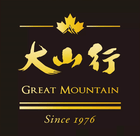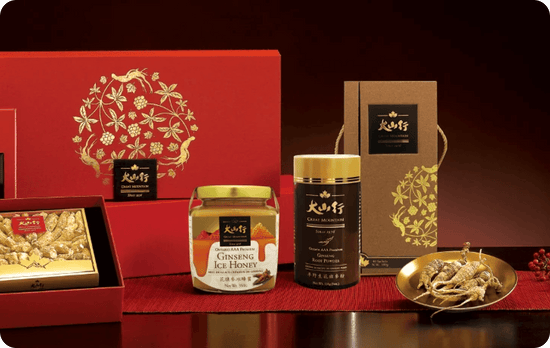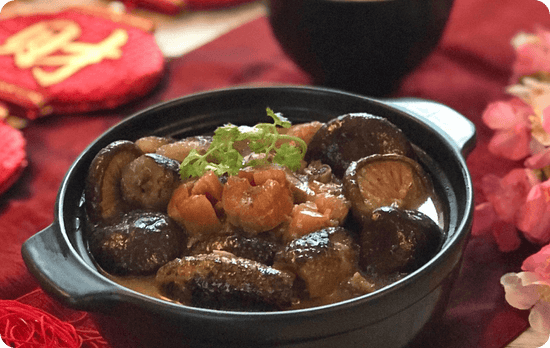What is Canadian Ginseng
Canadian ginseng native to the northern United States to southern Canada, was first discovered around 1700, and has been sold to the coastal areas of Guangzhou, China. It has been artificially cultivated since 1878. The initial yield was small, and then the yield was gradually increased. At present, it has been supplied in large quantities, and it is no longer a special supplement for a few people. Generally can be divided into the following categories:
Selection method and effectiveness
The age of the Canadian ginseng can be identified by the dent or the ring on the top of the Canadian ginseng. As Canadian ginseng ages, dents or rings will gradually increase. If the root of Canadian ginseng is discolored, it shows that the root of Canadian ginseng has lesions and internal quality problems. Healthy Canadian ginseng should not have faded areas. However, the appearance of Canadian ginseng cannot fully express the health status of American ginseng. Occasionally, the outer skin is damaged but not faded, and it is still a healthy Canadian ginseng. Canadian ginseng is rich in nutrients and contains a variety of American ginseng saponins, polysaccharides, volatile oils, a variety of amino acids and more than 10 kinds of trace elements and other nutrients. Among them, zinc is an important component of insulin and various enzymes, and it is involved in nucleic acid and protein synthesis. , participate in energy metabolism; calcium can maintain the health of bones and teeth; iron is an important component of human blood; at the same time, Canadian ginseng also contains manganese, germanium, molybdenum, silicon and other precious trace elements.
Autumn Harvesting at Great Mountain Ginseng Farm
What is sea cucumber/fish maw
【Sea cucumber】is a traditional Chinese precious ingredient, which is the "ginseng" in the four major seafood "abalone, ginseng, wings and belly". Originally grown in the sea, salvaged and processed into a dry state for easy preservation.
【Fish Maw】commonly known as "fish maw", which is the "belly" in "abalone ginseng wing belly", is one of the traditional Chinese precious foods. It is generally made from the swim bladder of large fish. After drying, the appearance is mostly translucent yellow.
Selection method and effectiveness
【Sea Cucumber】Sea cucumber is an ingredient with high nutritional value, rich in protein, but low in fat and almost free of cholesterol. In addition, because sea cucumber is delicate and easy to chew, it is quite suitable for the elderly and young children as a supplement.
Color: Due to the wide variety of sea cucumbers, the colors are also different. The general principle of selection is natural color. Sea cucumbers that are too dark and shiny may be specially processed and need special attention.
Epidermal: The integrity of the epidermis is a major point in selecting sea cucumbers. Sea cucumbers with broken skin or incomplete appearance may be made from stale sea cucumbers or damaged during the drying process.
Dry and humidity: The drier the sea cucumber, the better. If it is not dried in the sun during processing, it will be easily corrupted after a long storage.
Smell: High-quality sea cucumbers have a faint sea smell, not fishy odor.
【Flower Maw】The main component of fish maw is collagen, and it also contains a variety of trace elements, and its fat content is low. It is an ideal supplement food. Mainly used for nourishing yin, nourishing the kidney, strengthening the body function.
Color: Good fish maw is light yellow and translucent in color, clean in texture, free from blood tendons, blood stasis, etc. Size and thickness: Generally, the larger the fish maw, the more expensive it is. Mainly, the larger the size, the thicker the gel body, and the better the taste after stewing.
Dry humidity: The drier the maw, the better. If the inside is not dried thoroughly during processing, the color of the center will be cloudy, which is called "flower heart".
Smell: Good quality fish maw smells with a hint of sea odor. Fish maw with obvious fishy odor is generally inferior.
What is bird's nest
Bird's nest is originally a nest built by swallows. After removing impurities and fine hairs, it can become a bird's nest that can be sold.
Selection method and effectiveness
The main nutrient component of bird's nest is sialic acid, also known as bird's nest acid. It is also rich in protein and a variety of elements needed by the human body such as sodium, calcium, magnesium and potassium.
Color: Since the bird's nest is a natural product, and the swallow's saliva will be slightly different depending on the food it eats, it is a natural phenomenon. Bird's nests that are too white or even in color may have concerns about bleaching.
Appearance: The complete shape of the bird's nest is generally regarded as a better grade, and the more complete it is and the larger the piece, the higher the value.
Odor: Since the bird's nest is made of swallow's saliva, it is normal to have a slight fishy smell.
Fine hairs: Since the bird's nest itself is fragile, the fine hairs and impurities cannot be replaced by machines, and it is completely dependent on manual work. Even experienced processing masters cannot remove 100% fine hairs, so it is normal for bird's nests to contain a small amount of fine hairs. If there are no fine hairs at all, it is necessary to consider whether it has been bleached, and extra attention is required.



